I think it’s fair to say that camping is a lot different than it was 10+ years ago. Most people these days when they head to a campground need to be connected. They need to be able to read emails, post their pictures to Instagram, and watch videos on Youtube or Netflix. It’s no surprise that when you read campground reviews nowadays most reviews will include whether or not the park’s WiFi was excellent or painfully slow.
When we were first planning to full-time RV, finding a way to constantly stay connected was important to us. The main reason being that we were going to be starting this site and we wanted to be sure that we’d always have easy access to post & update the site. Going a weekend without internet is no big deal to us but this was our lives and we had to make sure we stayed connected.
Our First Campground Internet Experience
While we workamped at Jellystone PEI from May to September of last year we were fortunate to have the campground hosts run us a line to our RV that gave us high-speed internet. Our luck changed in a big way and the reality of campground WiFi hit us when we hit the road for our cross-country journey in September.
Crossing Canada with Poor WiFi Along The Way
For 36 days, we travelled from one end of Canada to the other and along the way, there was a constant theme at all the parks we stayed at – the internet was awful. While we were travelling around and doing a lot of touristy things, we still wanted to keep our site up-to-date and timely.
Most parks that we stayed at said that they had WiFi, gave us the codes, and some even gave us sites near the transmitters or repeaters but still – terrible internet. We didn’t have one park where the internet was good enough until we reached Winnipeg. From there til we hit the Pacific Ocean, the internet remained awful.
This experience made us realize how incredibly fortunate we were for that direct internet connection in PEI. It also meant we had to figure out a permanent solution if the internet didn’t get any better for our long stay in Tofino.
Tofino may be one of the most gorgeous locations that we’ve seen but the internet at our park and throughout the entire town is painful. It’s supposed to be getting better with some big updates being done throughout the town. When we first arrived we were definitely a bit concerned about how we’d be able to get all of our online work done. This is when we kicked our search for a permanent solution into overdrive.
How Can You Stay Connected On The Road?
While staying connected on the road can be a tough task for any RVer, it’s exceptionally tough for Canadian RVers as we have fewer options than our American friends. If you’re a Canadian RVer, here are the ways you can stay connected while on the road.
Tethering to your smartphone
When we were travelling across the country and had issues using campground WiFi we often tethered to our phone to do some basic tasks. Generally, this is a terrible option for Canadians because our data packages with all telecommunication companies stink. We have a 2.5gb plan with our phone that costs $105 a month. No doubt Americans are laughing at us right now. This is what most Canadians have to deal with – high monthly bills in exchange for a small amount of data. Because so much of Canada is remote our cell signal is often terrible, too. Here in Tofino, we rarely get LTE service.
You can purchase cell phone boosters to pump up the strength of your phones reception but this still doesn’t really work for Canadians. Because most of our data plans are crummy, expensive, and don’t have great signals in campgrounds it means cell boosters are almost useless. In the U.S. this is an option a lot of RVers go with. Data plans in the U.S. are a lot cheaper and there are options to get unlimited data plans which make us extremely envious. Cellular signals are also generally a lot stronger in the U.S. than Canada.
Mobile Internet/MiFi
Mobile internet aka MiFi options have been around for a while, yet again, aren’t a great option Canadians. While Americans have been enjoying mobile internet for awhile, in Canada it’s still expensive. On average, it would cost $100 for a 20gb monthly plan. Even though there are only two of us, 20gb wouldn’t go a long way with all of the online work we do. Plus, you still have to rely on the unreliable cellular strength which provides the MiFi devices with a signal.
Public WiFi
It’s awesome how many places offer free public WiFi nowadays. From cafes to libraries, there are unlimited places you can go to get connected. The downside is while the WiFi may be free, you likely have to purchase something in order to get connected to the internet. If you’re at a library, you probably have to have a library card. Not to mention, every time you want to use the internet you likely don’t want to leave the comfort of your home. Sometimes (most times) it’s nice to be able to hang around home in your pj’s while taking care of business, right?
WiFi Booster
After hours of research, we discovered that for Canadians, the best option for staying connected while on the road was a WiFi booster. Basically, a WiFi booster takes WiFi signals within a certain range and boosts the strength of those signals for your devices.
There are a few options for WiFi boosters out there, but the one that always caught our eyes was from WiFiRanger. After discovering and researching WiFiRanger, it seemed like this was our key to staying connected.
What Is WiFiRanger?
WiFiRanger is an Idaho-based company that was born when owner/inventor Kelly Hogan became frustrated when trying to stay connected while RVing. Since 2010, WiFiRanger has been selling WiFi boosters to help keep those who enjoy RVing stay connected.
Currently, WiFiRanger features four different products that can help you stay connected while on the road – Sky2 Pack, SkyPro Pack, EliteAC Pack & the EliteAC Pack FM. You can check out full details on each of the units here. In the end, we decided to go with the WiFiRanger EliteAC Pack FM.
What is the WiFiRanger EliteAC Pack FM?
When we were deciding to get a WiFiRanger product, we were set on getting either the EliteAC Pack of the EliteAC Pack FM. Both units feature the ability to boost WiFi signals from as much as 2 miles away. This means that if you’re in a park where the only WiFi being broadcasted is at the office, you should be able to get a quality signal where otherwise you probably would not. It also means that if you’re boondocking, you can pick up some free WiFi signals depending on where you are.
Both the WiFiRanger EliteAC options are essentially the same product with the only difference being how the product is installed. The WiFiRanger EliteAC unit is installed onto a pole, ladder, or batwing antenna whereas the EliteAC Pack FM is mounted on your roof with screws/dicor.
With the WiFiRanger EliteAC Pack FM, you also get the GoAC Router which connects to the outdoor mounted unit through 30 feet of provided cable. The GoAC Router creates your own secure network within your RV which all your devices will connect to. The GoAC Router also has some great features built into it like Auto Connect, Failover (searches for signals after going offline), Cellular Tethering, Data Usage Tracking, Data Usage Restrictions, & a lot more.
With our roof mounted unit, it was a concern of ours that the antenna might be an issue in low-clearance areas or with tree branches, etc. Thankfully, this isn’t a concern with the WiFiRanger EliteAC Pack FM. The unit comes with flex-guard technology which will flex the antenna considerably if any pressure is put on it.
Installing the WiFiRanger EliteAC Pack FM
The one thing that sort of scared us about getting a WiFiRanger unit was the installation but after reading about it and watching some videos, we were confident we could do it. When the WiFiRanger EliteAC Pack FM showed up at our RV, we unboxed it and were happy to see that there weren’t a tremendous amount of pieces included that would have to be installed. We were also happy because our unit came with two Werther’s Original candies which were quite a delight.
Step 1 – Mounting The Unit. WiFi Ranger recommends a couple of different ways to install the unit. You can fasten it to your roof with screws and/or dicor. I’m always hesitant about putting holes in our roof so we went with a different option. We used dicor and then taped over the frame of the unit with Eternabond Tape. This combination should easily keep the unit atop our roof without any issues.
Step 2 – Feeding Cable Into The RV. With the WiFiRanger EliteAC Pack FM you get 30 feet of cable which runs from the roof top unit into your RV where it connects with the GoAC router. The two options here were to drill a hole through the roof and feed the cable through that way. The other option was to feed the cable through a slide out. Can you guess which one we went with? Yeah – we weren’t drilling a hole, so we fed the cable through our back slide out room where the GoAC router and our main desktop computer are stationed.
Step 3 – Connect to GoAC Router. Connecting the 30 feet of cable to the GoAC router is a piece of cake as you can imagine. We had a lot of leftover cable which we bundled together with Velcro ties. We also secured the cable to our wall with nifty wall-mounted cable clips.
Step 4 – Setting Up the GoAC Router. With the unit connected to the GoAC router, it was time to power on and get connected. After starting up the GoAC router, it will automatically search for a WiFi connection. As mentioned above, the GoAC Router has a feature rich control panel with a lot of various customizations that you can make to your connection. I watched a handful of the very informative WiFiRanger Support/Tutorial videos on their website which really helped make sense of how to set up the GoAC Router.
When you first open the control panel you will see all the various WiFi connections available to connect to. Along with the names of the connections, you will see the strength of the signal & the encryption type.
Once you have picked a signal that you want to connect to, you hit Connect and wait for the unit to connect which usually takes 10-15 seconds. After that, you should have a boosted WiFi signal allowing you to enjoy better quality internet than what you would have had without the WiFiRanger EliteAC Pack FM.
Altogether, from the beginning of the installation process to getting connected to the internet, the entire process took less than half an hour.
Our Experience with the WiFiRanger EliteAC Pack FM
Currently, we’re staying at Crystal Cove Beach Resort in Tofino, a beautiful park right on the beach but unfortunately, the WiFi here is unreliable like it is in much of Tofino. While upgrades are on the way, we knew we would need help getting online and staying online. The issue at this park is the WiFi is provided through one main transmitter which then produces signals to various repeaters throughout the park, therefore the quality of the signals being produced for guests aren’t very good. This is pretty common for most RV parks. There are also a lot of beautiful but large trees throughout the park which likely causes a degree of interference. While we haven’t had the opportunity to try out the WiFiRanger EliteAC Pack FM outside of our current park, we’ve been pleased with the results.
Here’s a list of Pros/Cons of our experience with the WiFiRanger EliteAC Pack FM so far.
Pro – Many Connections To Chose From. When we first connected the unit, we were blown away with how many connections were available. In all, there were over 20 connections ranging from good to bad signals. We were impressed to see that the unit picked up a signal from another resort which isn’t too far away. There are, however, a tonne of large trees in between where we are and where that resort is which means it’s pretty impressive that our unit picked up that signal.
Pro – User-Friendly Control Panel. Setting up and configuring the control panel may seem like a scary task for some but it’s really easy. The user manual and tutorial videos are a great reference for configuring the control panel but you can get online without any configurations almost instantly after powering on the unit.
Pro – Strength of the GoAC Internal Network. With the GoAC router, you connect your devices to your own personal WiFi connection that is set up within the control panel. Some concerns we had were that with our router placed at the rear of our RV that the signal wouldn’t be strong enough to reach the front of our RV or even outside of our RV. We’re happy to say that router provides a strong signal that allows us to always stay online.
Pro – Customer Service. On a couple of occasions, we have contacted customer support through their online ticket system with some basic questions. Within a day, the support team got back to us with a detailed explanation helping to inform us or helping to solve our issues. WiFiRanger is a small team that is definitely there to help when you need it.
Pro – The Boosted Signal. This is the big one. As previously mentioned, we had difficulty staying online with a quality signal at our current park. After hooking up the WiFiRanger EliteAC Pack FM we were able to more consistently stay online with a much stronger signal. Before installing the unit we had difficulties uploading images for our blog, watching videos on Youtube, or even loading basic web pages. Now, the boosted signal gives us a sense of normalcy with our internet connection and has allowed us to be less frustrated with dropping signals and poor quality. The speed test we did showed almost an increase of almost double the signal strength we normally have.

A speed test we did once we connected the WiFiRanger EliteAC Pack FM which more than doubled our signal strength.
Con – It Won’t Always Help You. This is at no fault to the unit itself and more so the outside variables that dictate whether you’ll have a good connection or not. Basically, you need to have realistic expectations.
The one common issue that you can run into is that you’ll connect to what looks like a strong signal but that signal is degraded by a lot of people using that signal. If you’re in a large park where there’s only one transmitter, you may still have difficulties getting a good signal.
Some of the other variables that could degrade your overall signal include clearness of line of sight, wireless interference & weather. We’ve had instances where the park WiFi was degraded for a variety of issues where the WiFiRanger EliteAC Pack FM cannot help.
Overall, we couldn’t be happier with how the WiFiRanger EliteAC Pack FM has helped keep us connected. With our blog to update and our upcoming online business launch, a strong and consistent signal is very important to us and we’ve been thrilled that WiFiRanger has been able to provide that for us.
***UPDATE***
In 2019, WiFiRanger released a whole new system to help you get the best possible WiFi connections while on the road. The system is called Converge and is a sleek looking update on the unit that we have and love. While we haven’t tested the Converge system, based on our previous experience with WiFiRanger and what I’ve read from fellow RVers, this is something you need to have if you need to stay connected on the road.
Tell us – How do you stay connected while on the road?
Want to stay connected while on the road? Check out the full lineup from WiFiRanger that can keep you connected while RVing around the continent.
Receive 5% off of your WiFiRanger purchase by using our promo code: WFRFTC
Disclaimer – We received the WiFiRanger EliteAC Pack FM in exchange for this post. All opinions in this post are 100% truthful in regards to how we feel about the product.
Some photos courtesy of www.wifiranger.com
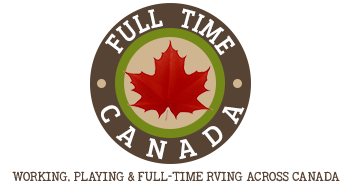
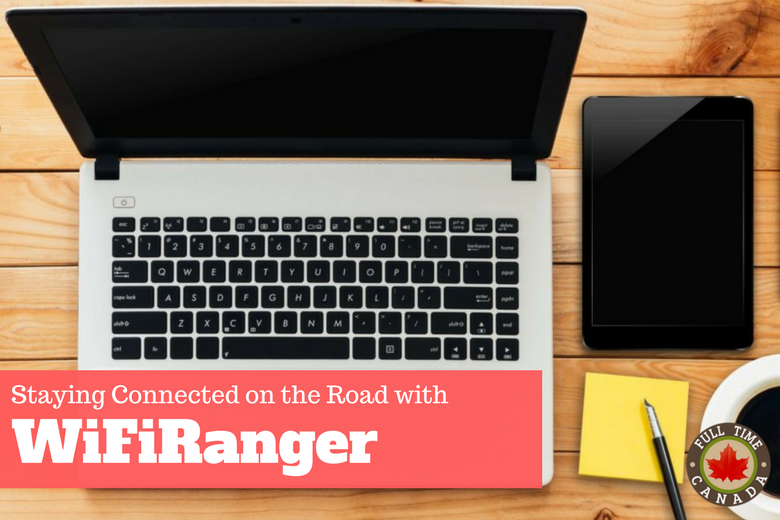

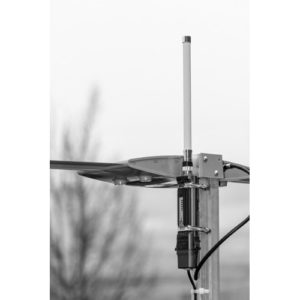
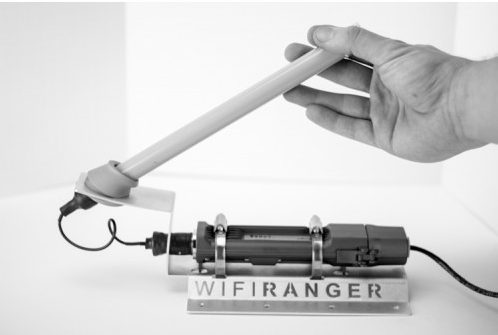
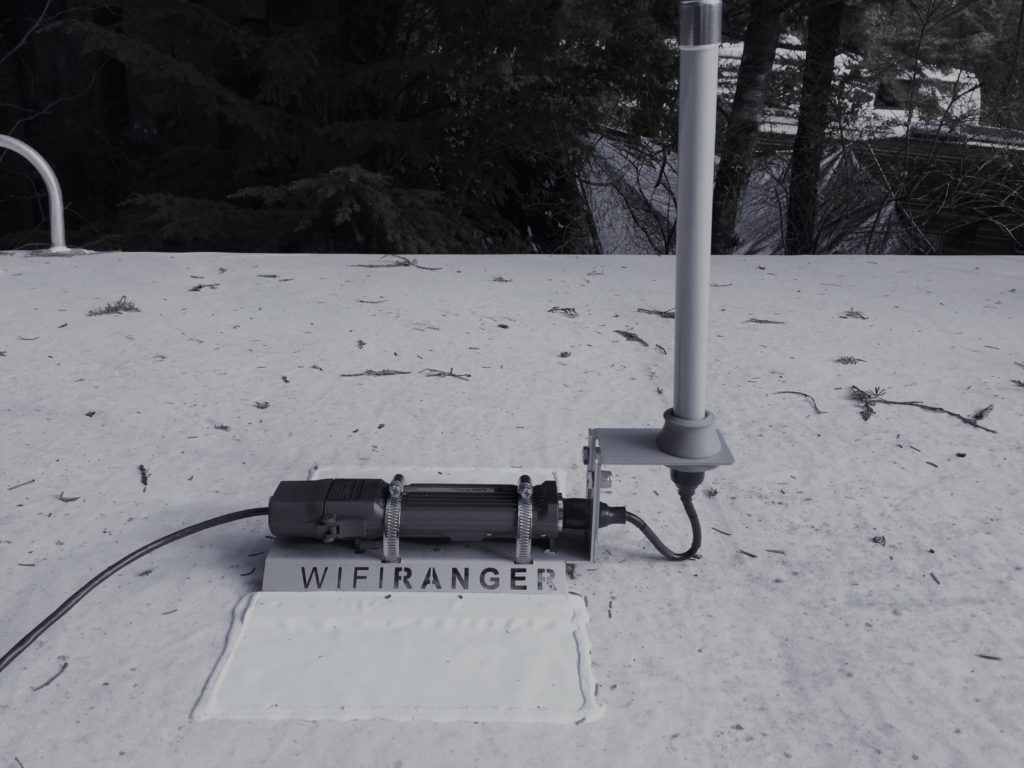
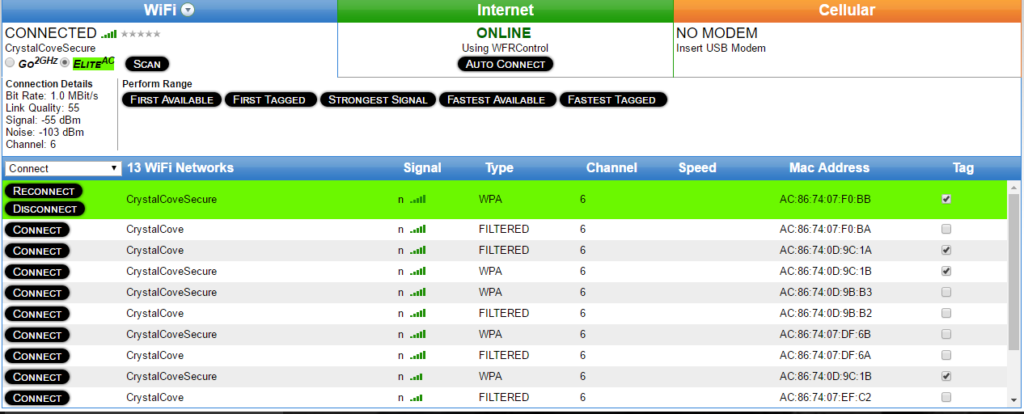
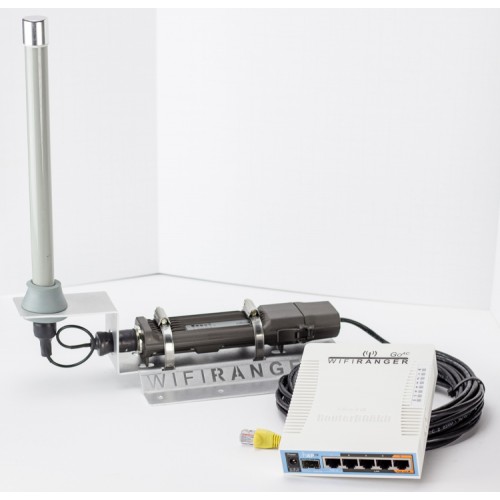
11 comments
Thanks for writing this. It was very helpful. I have been digging around for any kind of info as at the camping we will be at this summer, there is only internet at the head office. They have no repeaters. Our camper is already there and We cannot catch a signal after 50 feet from the office. We are about 4000 feet from the building. I am going to contact the WIFIranger company as I am sure that if it works, more campers there will be interested.
Hi Rick, We’re glad that you found the post helpful. It sounds like you definitely could benefit from having a WiFiRanger set up. When you call them besure to mention us and us the promo code WFRFTC for a discount. Cheers!
Hi guys,
Great article although I have to add it’s a bit misleading. I’m sure it is reflective of your experience but allow me to add some dimension.
There are many types of RVers with many different needs. Some folks are happy to sit at one campground for long periods and others, like us, who are constantly on the move. Consequently, there are many different solutions and many different price points too.
I’m a full-timer, constantly on the move and work 8 hours a day online with file transfers, a HUGE amount of VoIP, screen sharing, email etc. Data is *critical* for me, without it, I can’t even start work. If I don’t work, I don’t get paid and then I can’t travel. Reliable data is right there in 3rd place after a pulse and drawing breath.
What that means is that public wifi is the cherry on the frosting on the cake, it isn’t even the frosting. The reason for that is no matter what equipment you have, you are never going to be able to circumvent the infrastructure supplying that signal to your equipment because that belongs to the provider. They can – and will – limit your bandwidth and capacity. This is why RV campground wifi sucks.
Cellular data is far from useless in Canada and is the primary choice for anyone that needs a reliable signal with no throttling. Sure, it is expensive but how much do you need that data? Also, far from being useless are the cellphone boosters. I run a weBoost Drive 4G-X booster which I only use maybe 10% of the time with 1% of that time hooked up to a Yagi directional antenna. I spent 8 weeks last fall at distances greater than 10Km away from my nearest cell tower where most phones wouldn’t even pick up a signal and worked flawlessly.
When I do run wifi I hook up my wifi routers 2.4GHz band to the public feed if the signal is strong enough and if it isn’t, I have a Ubiquiti PowerBeam directional dish that sits atop a 20′ pole. I can pull in wifi from about a maximum of 20Km with that so I don’t have to rely on public campground wifi, I can pull it from the McDonalds in the next town. At 4000′, I’d wager that the Ubiquiti will beat the WiFi Ranger hands down and it is cheaper too.
Don’t get me wrong, the WiFiRanger is a good product but it isn’t snake oil, it doesn’t suit anything but the most casual user simply because public wifi doesn’t work for anything more critical for most of the time. You get what you pay for and in some cases a little more or a little less.
I’d be happy to write a piece for your blog on the subject if you think it would be worthwhile. On our travels I’ve met a lot of people that don’t understand data and get excited about ‘unlimited’ and ‘full bars’ but don’t understand backhaul, data throttling or security. It confuses people when they say “I’ve got full bars!” and I tell them that doesn’t mean much at all.
One more thing; if you are going to use public wifi, get a VPN! It isn’t optional, it isn’t a ‘nice to have’, it is a critical necessity. I would recommend https://www.privateinternetaccess.com/
Would you mind saying what data plan your using? Looking at the major cell service providers, Bell, Rogers, etc, all their plans seem to cap at 55GB for 150 per month. I have similar needs with data, and that doesn’t seem like enough to me.
Thanks for this guys, I just started looking into this question a couple of days ago so your timing is impeccable. We narrowed our RV search down to 2 last night so we are getting ever closer to going Rogue. 🙂 I noted the promo code also so double thanks!
Glad you enjoyed the post, Katie! Good luck with the move to full-time living 🙂 If you ever have any questions please feel free to reach out!
Thats really cool that you can get wifi like that! And you’re right that nowadays, it’s important at a camp site. And for you all, it’s important to keep blogging!
Hi Adam, This information is helpful as we are looking at RVing likely five months of the year if not longer and internet connection is critical. I have a question about the GoACrouter. What is the power source? Can it be used if boondocking without running the generator?
Any suggestions for something that will allow my son to play Fort Nite in Ontario provincial parks while camping in a R V Would love to be able to get Netflix and x box in the trailer. Thanks
Thanks for ‘ll the great info. We are full-time RVing with 6 months in Canada – mostly BC right now. And then 6 months travelling through USA and down to Mexico. Do you know any plans that would support internet service cor me through all 3 countries?
May thanks I advance.
Martin
Sponsored comment up there with Mark? https://www.privateinternetaccess.com/ (I’d almost place a disclaimer with this)